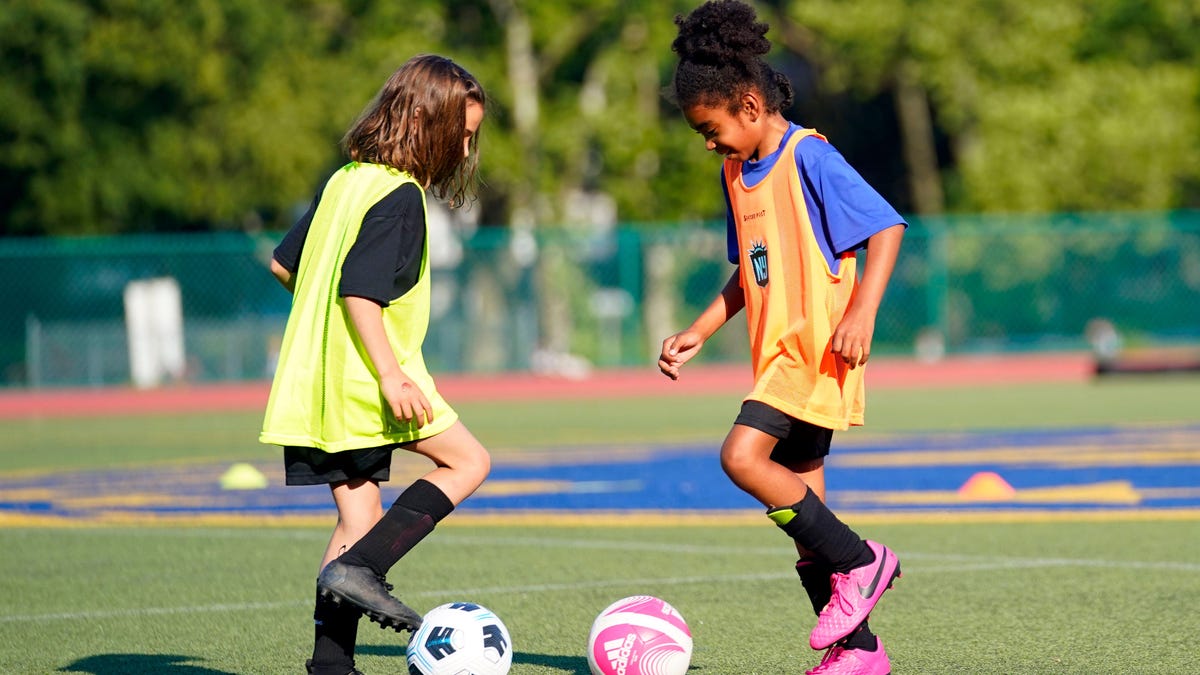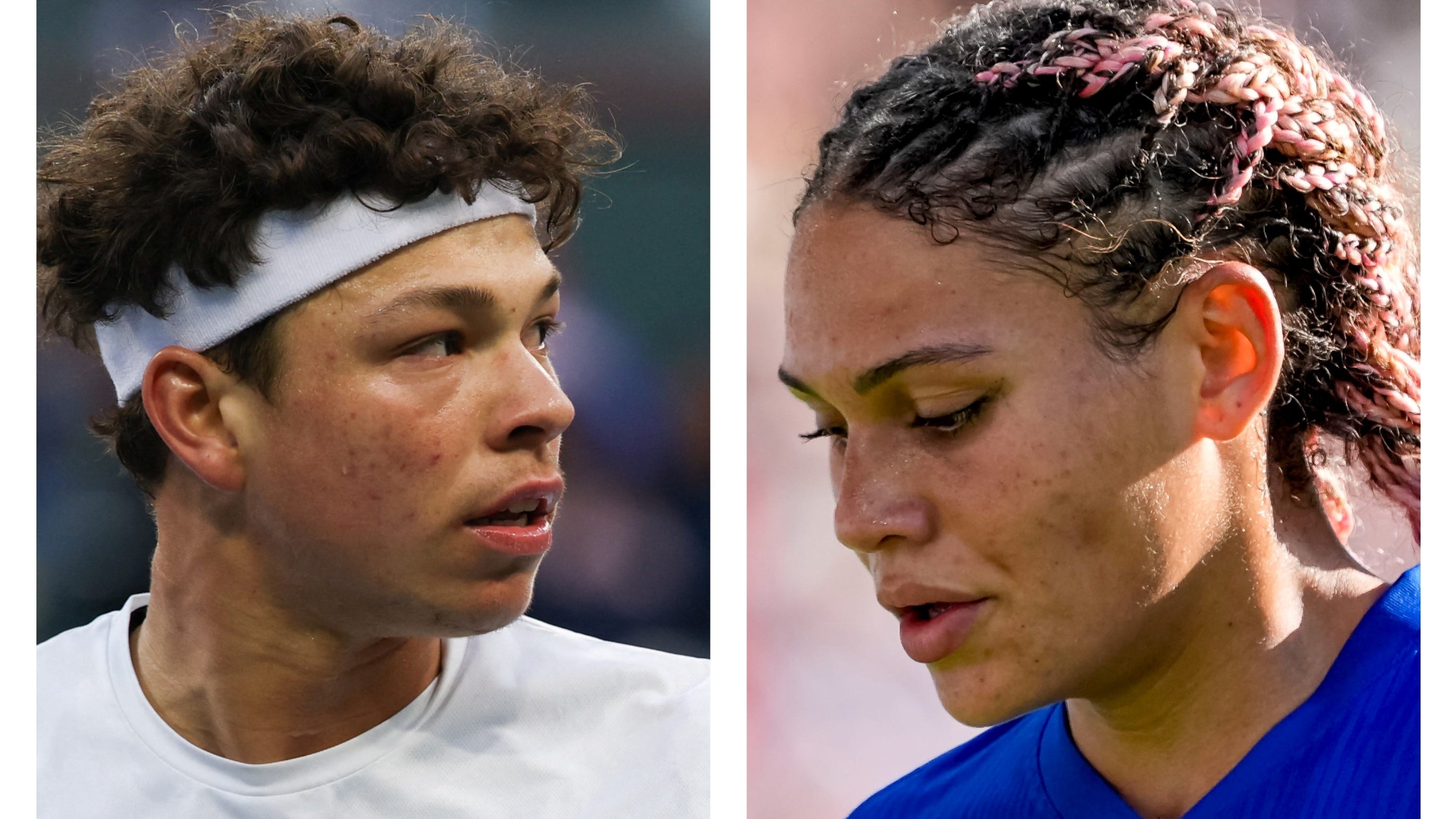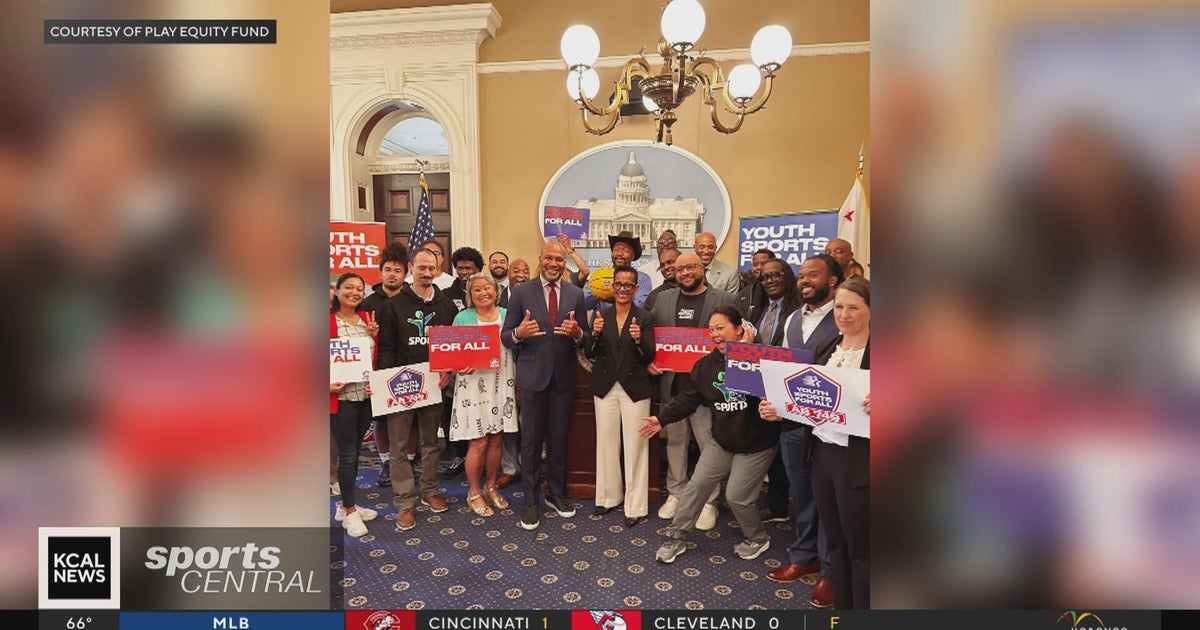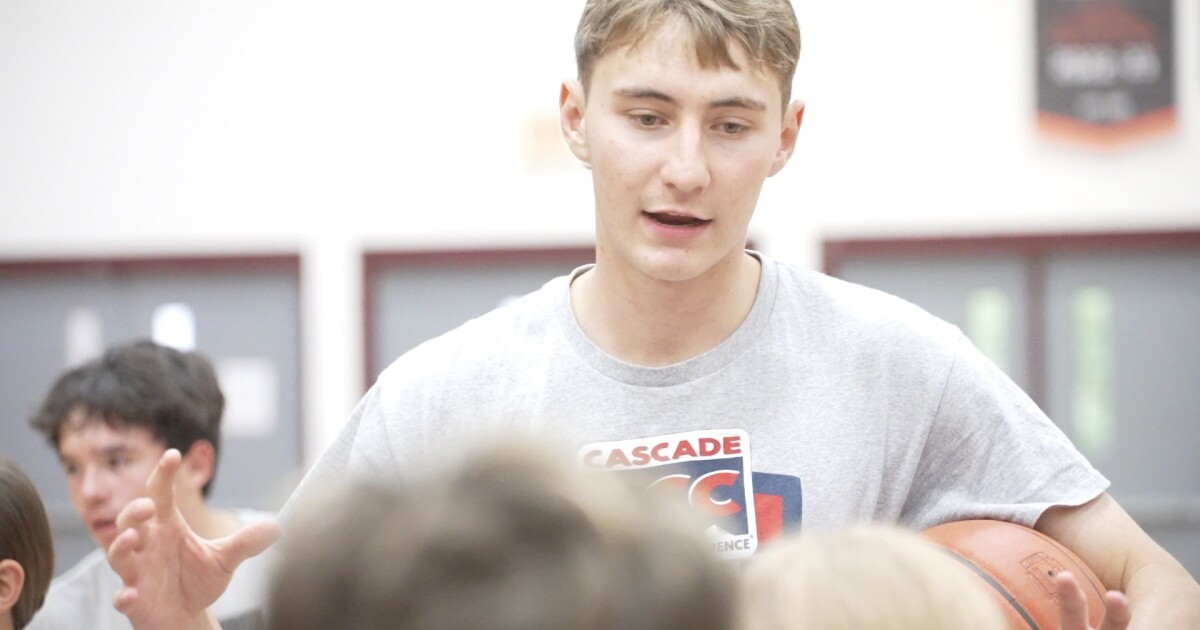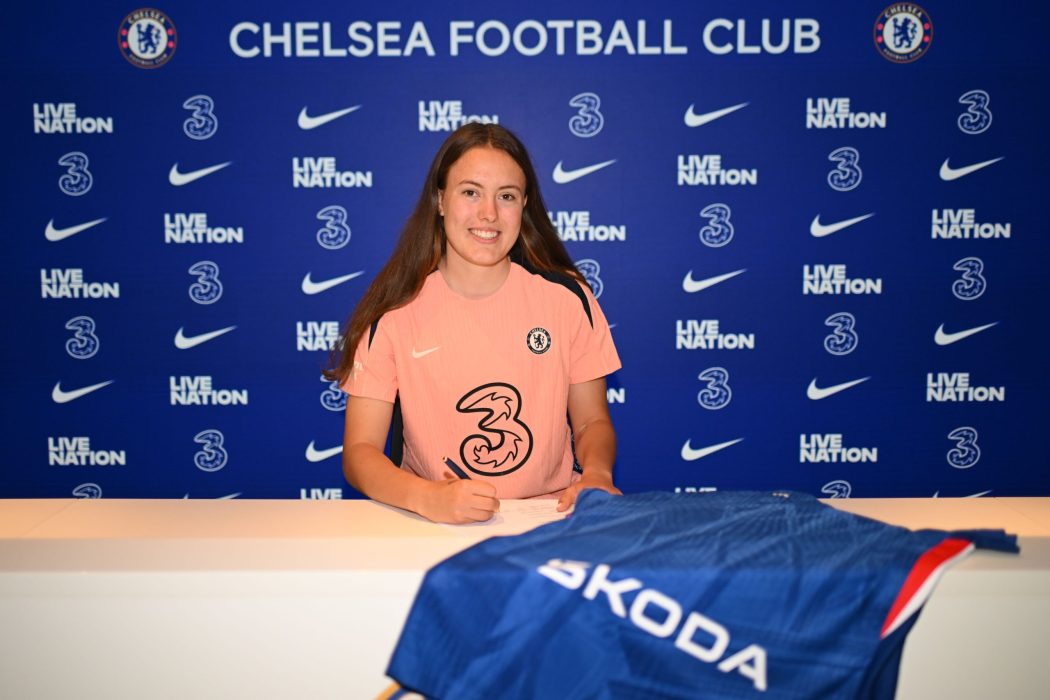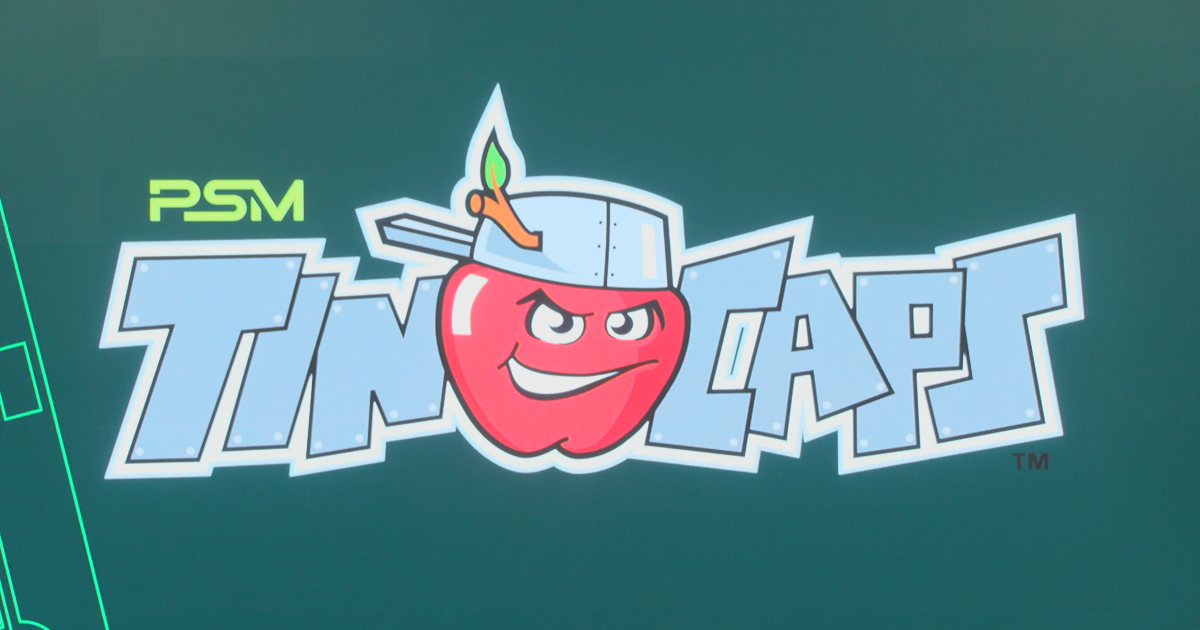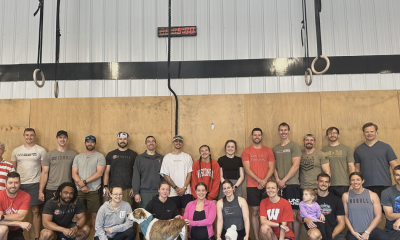So, Ray, what’s it like transitioning from obviously being a basketball star, NBA champion to now a basketball dad? Well, you gotta remember it wasn’t really a transition because even when I played in the NBA I was still a dad. So now I’m just the dad and the Uber driver, uh, because every morning I’m there and I’m taking the kids to school and picking them up and, you know, at, at all their sporting events. So I’m not as gone as much uh as when I played, um, so just consistently, they know I’m always there and It’s amazing because When I put my shoes on and go take out the trash, they’re like, uh, Dad, where are you going? I’m like, I’m just going to take out the trash because they’re used to now me being home so much, which is uh which is great uh being retired. Obviously, being the son or daughter of Ray Allen has its advantages, but how have you made sure that doesn’t come with too much pressure or too much of a burden too as as they pursued their own basketball dreams. Uh, sometimes I have to take myself out of the, the, uh, equation. Uh, when there’s some games I just don’t go to, just Um, no, or I would say more practices, uh. Uh, being a coach, being an assistant coach in some different programs helping out, sometimes I just kinda stay away from it. Uh, some games I just try to. Wear a hat and sit in the bleachers and I try not to be too loud and draw attention, uh, cause there are times when people know I’m there, they’re like, which one is your son? And I’m like, he’s out there. Because because then kids started to pay more attention to to who who he is and then. They don’t know how to operate with that bull’s eye on their back just yet and so. It it does require me just to pay attention. Uh, at all times. Like, I know you guys want me to be there and I’m going to be there, but I’m not going to be where you need me to be, where you can see me. I’m going to be watching from under the bleachers or Just something just to just take the pressure off of the situation for everybody cause sometimes. The other kids get distracted. Like I, what I would do sometimes, I did this last term there and I left the game early. And I knew the team was playing a little harder because it was my team and my kids were on it. And literally, they ran out of the gym looking for me when I, when I was in the parking lot. And so it, it does sometimes distract other people, but even with my AAU program, I always tell the kids I was like, sometimes you guys are playing against kids that want to beat me and not you because they see the name on your chest. I said, so you got to really understand there’s a little more bull’s-eye on you than you realize. So in the very least, Have energy Uh, don’t let them work harder than you. Uh, be focused and know that they feel like they’re playing in a championship game because they want to be able to beat you guys. No, I’m, I’m just starting this journey myself. I’ve got a seven year old daughter, 5-year-old son, and, and a, a 1 year old here, and, you know, I didn’t play college athletics, pro sports, not expecting them to, but there’s obviously a ton of incentive now for kids to get into college sports if they can, between NIL and scholarships. But I’m trying to figure out, I mean, when’s the right age to pursue more advanced coaching, private lessons, and, and how do you know if your child is, is really gonna benefit that all, from all that comes into that? Well, hm. Because it, it’s not a, it’s not a quid pro quo. Um, if you go into it with the hopes of an a reward or something at the end of the rainbow, then a lot of times you end up disappointed by it because now you’re driving a narrative. Now you’re, you know, I had parents that were paying, I have one parent that was paying $500 an hour. Um, for, for a trainer, and the trainer ought to be ashamed of itself, but. They just knew that he can tell this guy anything because he had the money to pay for it. And that’s just not, that’s not the formula. You know, private lessons is not the formula. The formula for me, for, for kids specifically in basketball is just put them in environments where they could play and there’s other kids better than them and just keep showing up and playing basketball every single day. Uh, foundationally for you as a dad. It’s about your environment that you’re creating for your kids. Do they, do you walk with them on the weekends? Are you playing board games with them, um, at home, instead of them, everybody just going their their separate directions? Are you watching sporting events and cheering and and celebrating and creating your your moments with your family? You know, are you eating at the table together? All those things create this communal spirit that live with inside kids that that allow them to want to be a part of something. You know, now they’re learning how to be a part of a system, a team. And then when you’re playing board games, they’re learning how to want to win at those board games. They want to compete. You know, you don’t win anything, but there’s so much fun. Challenging each other and talking and doing all these things. And so now you’re building something with inside of that, that child, their heart and their desires. So then you put them in any situation and they want to compete. And then they go out and play basketball, and they want to beat the kids and get better. So, it’s about changing their hearts and minds and and putting something on them so they can start to say, I want to do that, and I want to compete, and I wanna learn because you’re teaching them that at home. But if you’re saying, go out and play basketball and do all these things, but every day you sit on the couch, you don’t work out, you don’t do anything to improve yourself, they’re mimicking your behavior, and they’re like, oh, I’m good, I’m just gonna stay here. Now your kids, you got two of them playing in AAU tournament this weekend at Disney Wild World of Sports, right? Yeah. I is AAU still the best place you think to compete and get seen at colleges at a high level for, for youth sports? No. I, I don’t think it’s. It doesn’t have to be the best place. It doesn’t have to be the optimum place for you, because remember, It is finding a uh a system for your kids to be able to play basketball every day. Now, if they’re playing every day and they’re competing in their community and they have a place to go, and they have, I played, I became good because my dad was in the Air Force and I played on the weekends with him and all these grown men. You know, I played, if, if I compare percentage wise, AAU was probably. 10, 15% of my life growing up. You know, where you, I played once or twice, 11 summer and then I end up playing a couple more teams that summer. Because now I can showcase my skills, but I wasn’t coming to AAU to build my skills, to learn. My program now is hoping to help those kids build their skills so they can learn and fall in love with the game and then get better. And then you have the games to see how you stack up. But a lot of AAU programs, they’re just about what shoe you’re wearing, the uniforms, what tournaments you’re playing in. And we, as a, as a culture, we we we need to change that. We need kids to start learning the concepts of basketball and understanding. What it takes to be part of a team and then individually work on your own skill set. So, if you’re, I, and I, I don’t even like A kid that’s just playing, just doing all this skill development. I would rather them be out of the backyard playing 21 and playing 2 on 2 and 3 on 3 because now It’s unadulterated. You don’t have to you don’t have to fix these situations. They’re learning how to play basketball by just getting comfortable being in the backyard playing pickups. So that, that, that’s what I would say more than anything is just them playing. It’s funny how much the game has changed too just so recently, like I was looking at some of your stats today. Most threes you made in a season I saw was 269 and two Celtics almost did that this year. Uh, do you think we’ve gone too far with the evolution of the three-point shot and just how much of basketball is a math equation now? Well, threes are more than twos, um, the, these analytical guys will tell you that. Um, but I’ll say that. Not making a 3 isn’t better than making a layup or getting a mid-range shot where you’re getting 2 points. Um, traditionally, In in the NBA big men have always been the leading. The leaders in field goal percentage. Uh, you know, you could bank that literally and and and figuratively. So, over the course of the last couple of years, big men are no longer really have a presence in the game. So that’s a skill that we don’t see anymore. There used to be so much great dominance of bigs on the block, scoring post moves, and when you want a bucket down the stretch, you can go to your big man. Now it’s just shoot 3s. You just keep shooting threes, and that could be a hit or miss proposition. Um, and I think that that doomed the Celtics a lot this year. Uh, just, you know, just living and dying by the three-pointer. Um, but when you need a bucket, sometimes you just need a bucket and it’s gotta, you, you know, it’s gotta be a mid-range. You sometimes get to the hole, get a layup, and that builds offensive rhythm. So, I, I just think right now, analytically. I understand where they where where they come from, but. I, I just think right now, there’s too many players on the team shooting threes. And there’s no diversity in the game. As much as everybody can do it, it’s 5 out basketball, but there’s, there has to be more to it than just that. You know, and and the players today will tell you that the skill, they’re so much better than the players from the past. But I’ll show you. Terrell Brandon, uh, and these are guys I’ve played with, you know, Glenn Robinson. Uh, Ben Baker. Um, You know, those guys that were great mid-range scorers. Terrell was great in the pick and roll. Sam Cassell was great on the block. Um, you know, none of them guys shot threes at all, and they were so specific in their skill set, they could score and were problems out there on the floor. But now we don’t have that type of, those types of players anymore because we, we’ve sacrificed that skill for three-point shooting. And the 3 points, it’s a lot of great shooters in the league today, but there’s also a lot of bad shots taken, a lot of untimely, you know, 3s taken, which, you know, they’re gonna score more cause long term you shoot more 3s, but from a skill perspective, Now certain players aren’t uh uh making it to the league anymore because there’s no No post presence. Yeah, it’s, uh, it’s, it’s fascinating. My son down there. I wish I could say he’s wearing a Ray Allen jersey right now. He’s got, uh, Steph Curry on, but I, I, I was a big fan of your career, so I appreciate you taking time to do this with me today, man. Yeah, no problem. It was a pleasure. And good luck to your kids down there in the tournament. Yeah, thank you. Appreciate you.

